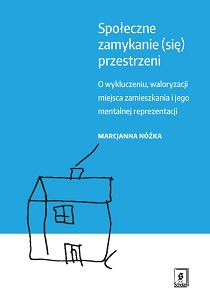
We kindly inform you that, as long as the subject affiliation of our 300.000+ articles is in progress, you might get unsufficient or no results on your third level or second level search. In this case, please broaden your search criteria.

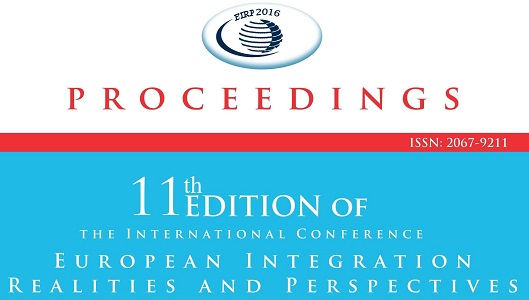
EIRP Proceedings containing the works of the International Conference on European Integration - Realities and Perspectives, bring together all the submitted and presented contributions, providing a conclusive and accessible view to all who wish to feel the beat of research. The conference is international offering to researchers the opportunity of showing their works across the world.
More...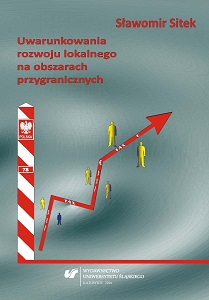
The paper looks at the course of the process of local development in changing systemic and economic conditions in specific zones, namely border regions. Local development is one of the aspects of territorial development that is implemented at the municipal and administrative district level. It is expressed through favourable changes, the source of which are, in particular, local natural and material resources and the characteristics of the local community that are conducive to the development. In the result of these changes the needs of the residents are more fully addressed, and their welfare improved. It includesa number of factors relating to the social, economic and spatial sphere. What is a new determinant of the local development in border regions is the integration process causing the „erosion“ of the borders. This applies to intra-EU borders, because of the fact that at the same time on the external border a noticeable sealing process takes place, and this necessitates verification of theoretical concepts explaining the mechanisms of the development in these areas. The paper is aimed at the identification of the determinants of the local development of Polish border regions, with a particular focus on the role and function of the border as a factor modelling this process. The research problem consists in the identification of factors and barriers to the local development in the border regions, with the emphasis on the elementspointing to the specificity resulting from the neighbourhood of the border. The methodology of the paper is based on a compilation of quantitative methods, which have been supplemented with a range of qualitative information. The specificity of the conditions of the local development in the border regions has been tested in the three types of neighbourhood:• the border region of A type – between the countries of the so-called ‘the old’ EU and Poland, in this case represented by the Germany-Poland border (PL-DE)• the border region of B type – between the countries of the so-called ‘the new’ EU, represented by the border regions of Poland-the Czech Republic (PL-CZ), Poland-Slovakia (PL-SK) and Poland-Lithuania (LT-PL)• the border region of C type – that constitutes an external border of the EU, represented by the border regions of Poland-Belarus (PL-BY), Poland-Ukraine (PL-UA) and Poland-Russia (PL-RU).Accordingly, the area of the research comprised the municipalities and administrative districts immediately adjacent to the state border. The total number of the territorial units included in the study is 164 municipalities and 56 districts.In accordance with the aspects of local development, a comprehensive inspection of the theories of social, economic and spatial development was carried out, and subsequently the concepts whose assumptions would be adequate to the conditions observed in the border regions were sought amongst them. The assessment of the determinants in the individual border regions allowed establishing where the conditions are the most favourable for the development. Moreover, it had been assumed that together with an increasing distancefrom the border its influence decreases, and also that a greater number of border crossings positively stimulates the process of local development. In addition, the influence of the local government, Euro-regions and the EU programmes on the condition in the border regions was verified.The paper presents the change in the character of the border and the circumstances surrounding its formation, with particular emphasis on the period after 1989. It also comprises a parametric evaluation of the stage of the development of the border regions in the system of the municipalities and administrative districts, and the correlation between its condition and the existence of the border crossing and the type of border region.The participation of the border regions in the demographic, financial and economic potential of the country was diagnosed, along with the dynamics of the changes in this field in the years 1995–2015. In addition, the issue of macro-economic differences between the countries was discussed. The impact on the local development was also investigated on the basis of the level of trade and exchange, differences in prices, differences in the condition of labour and real estate markets. In the social sphere, the attention was paid to the multiculturalism of the border regions and the issues of social activity. What was emphasised was the importance of tourism and the role of EU programmes designed for the border regions.It was found out that the conditions for the development of the local Polish border regions are diverse, which results from the very character of the border. The overall assessment of the determinants of the development is positive. The actions of the state and the EU aimed at integration are supported with numerous measures focused on the cross-border cooperation. In the border regions, there are still favourable economic differences that allow obtainingbenefits of the exchange. It has been confirmed by a growing level of expenditure in the border regions and a greater number of travellers. Further development requires developing a common identity of the border regions originating from the common ground of the cultures and nations. The community of goals and further understanding is the basis of trust, which constitutes the foundation of social capital. More and more plentiful is the evidence that the inhabitants of these regions are beginning to see the border as an opportunity for development, not as a barrier to it. The contact between the sides of the border is also easier, which is the result of the reduction in its formal rigor and the development of technical infrastructure. The border region of A type is the best developed, whereas the rate of changes indicates that its advantages over the other border regions are decreasing. The most favourable conditions for local development in terms of economy prevail in the regions adjacent to the borders with Germany and Ukraine, while as for the social sphere – in the regions bordering with Slovakia and the Czech Republic, and slightly less favourable at the border with Lithuania. The worst situation (in terms of both of the aforementioned fields) was observed at the border with Russia and Belarus.
More...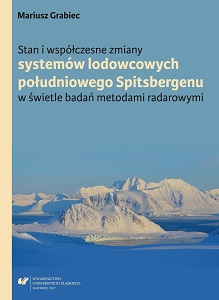
The book presents the interactions that take place in the glacial systems and defines the mechanisms that control these processes. The purpose of this book is to investigate how glacial systems react to changing climate.The conducted analysis applied a set of field studies from 2007—2014 carried out in southern Spitsbergen between van Keulenfjorden fiords in the North and Hornsund in the South. The widely applied radar sounding is an effective research method in the glaciated areas thanks to its noninvasiveness, mobility, wide depth range of the survey area constituting the glacial system, as well as simplicity in distinguishing the structures within the glacier due to their contrastive dielectric properties. The analysis focused on the processes undergoing in particular components of the glacial system (i.e., snow cover, firn, the interior of the glacier in various hydrothermal states, water drainage system) that constitute a complex interacting with the natural surroundings and is thus conducive to the formation of a glaciosystem.The research shows the glacial systems of Svalbard as responding gradually to the relatively fast environmental changes. Hence the view of the glaciers as indicators of such changes needs to be regarded with caution and due consideration of their delayed response time under a given climate scenario and the potential process that might continue even after the factor that caused the changes has already ceased.The book is addressed to all the individuals who study glacial processes and the reaction of glacial complexes in the Arctic to the environmental changes, and to experts who use geophysical surveys, predominantly radar systems in the glaciated areas. It will also be of interest to aficionados of Earth’s frigid zones.
More...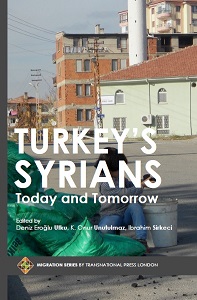
Turkey’s Syrians: Today and Tomorrow, edited by Deniz Eroğlu Utku, K. Onur Unutulmaz, Ibrahim Sirkeci is published by Transnational Press London. The book presents a selection of papers drawing on recent research on Syrian refugees in Turkey. Since the first arrival of Syrian refugees, the issue has sparked considerable national and international interest. Political discourses concentrated on state ‘generosities’ to provide protection to those coming from insecurities and possibilities to reduce ‘burden of refugees’ to receiving countries via international solidarity. While these concerns focus on effects of hosting refugees, what happens to refugees themselves, how they are affected by government policies and how they are perceived by host country people are questions yet to be answered. This book brings together a multidisciplinary set of contributions scrutinising the case of Syrian refugees in Turkey.
More...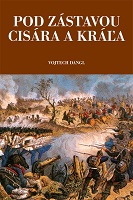
The presented monograph is an anthology of case-studies dealing with various aspects of military history of Slovakia starting with the antecedences of the 1848 revolution and continuing till the early beginnings of World War I. The texts are selected and arranged in chronological order. This mentioned period represents an era of crucial importance for the development of national consciousness of the Slovak nation. During that time, many revolutionary changes of social order took place in Hungarian Kingdom; decisive political struggles about the form of modernization were fought, the social structure and spiritual fundament changed radically, national contradictions among the nations living in the kingdom were more and more evident, the oppressive policy of Magyar elites towards other nations and nationalities strengthened. In consequence, the Slovak political representatives were pushed into a defensive position and they set as they primary goal the safeguarding of the Slovak national existence. The publication is divided into four parts: introduction, two basic chapters ordered chronologically and conclusion. In the first chapter titled Approaching the World War, I pay attention to the year of revolution, 1848, which represented a major turning point in the transition from feudalism to the capitalism and which deeply influenced the process of bourgeois transformation of the majority of European states. Further, it was for the first time in modern history of the Slovak nation, that an independent armed action of the Slovaks took place – the socalled September Uprising in 1848. In this chapter, the issues connected with the armed action of the Slovak volunteers in September 1848 serve as a background for a complex military historical analysis of that time. The Austro-Prussian War fought in 1866 that culminated in the defeat of Austrian army in the Battle of Königgrätz (Hradec Králové), brought a correction of great power ambitions of the Habsburg Empire, it further led to a revision of its foreign policy and cause inner political turbulences, leading to the Austro-Hungarian (Magyar) constitutional settlement in 1867. Last but not least, a reform of Austro-Hungarian army was initiated. In the second chapter, I consider the course of the mentioned war and its consequences, paying attention to the participation of Slovaks in the military formations of the Monarchy. The next three studies in this chapter seek to illustrate the system of resurrection of the Austro-Hungarian army and the organizational development of the infantry and cavalry units specifically considering the effects of those issues on Slovakia and the role of Slovaks in the frames of the Habsburg army and the units referred to. It is worth a mention that this is the first comprehensive attempt in Slovak historiography to reflect the above-mentioned issues. The studies are supplemented by tables and schemes and they are followed by an analysis of the nationality issue in the army – both the Habsburg and the Honvéd army – as well as the reactions of the Slovak policy to the mentioned questions in the last decades before World War I. Another chapter is dealing with the military and diplomatic background of events that followed after the Assassination of Archduke Franz Ferdinand of Austria in Sarajevo and which culminated in the World War I. The final study of this chapter is dealing with military plans of the Austro-Hungarian monarchy in the eve of the outbreak of World War I, taking into account their connection with the military plans of the general staff of the German army. The second part of this book is titled Slovaks in the Great War and is subdivided into three chapter, each of them monitoring the first stage of military actions in the north-eastern front, where numerous Slovak soldiers incorporated to the V. battalion of Bratislava and VI. battalion of Košice took part. In the first chapter I focus on the prelude of the Austro-Hungarian military formations operations in the north-eastern front during August 1914, which later resulted in most determined fights in the initial phase of World War I. In the following study, I consider the most extensive military operation of the Austro-Hungarian army in the north-eastern front – the Battle of Kraśnik. My last study is dealing with the Battle of Komarów, in the Russian literature better known as the Battle of Tomaszów. In both battles, many soldiers coming from Slovakia lost their lives. In addition to a detailed description of the course of these battles and the whole military situation, I pay attention to some controversial decisions taken by the high command of the Austro-Hungarian army, resulting from frictions and discrepancies between the German and Austro-Hungarian military command. These decisions caused setbacks of particular military operations. World War I and its consequences changed the political map of Europe and brought a dramatic change in the balance of power. The multinational Habsburg monarchy, which long before the outbreak of the Great War wasn’t able to respond and satisfy the demands (political, lingual, cultural etc.) of oppressed nations, ceased to exist. On its ruins, new state raised. By the establishment of the Czecho-Slovak state on democratic principles, Slovakia and the Slovaks entered a new historical era.
More...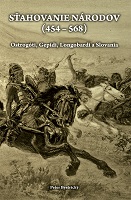
The author describes the history of tribes residing in the Carpathian basin after expelling Huns. No one of them remained in Central Europe and all of them, victorious and defeated too, completely or partially, left for Italy. He follows the fates of the kings who came after Attila, but most of them remained in his shade, and tribes that defeated Huns or founded their empires in the territory bounded by the Carpathians, the Alps and the Sava river, but except for one they perished before Avars came to the Danube. East Roman Empire´s interest in Central Europe did not fall even after it ceased to be its part and fought for it with Ostrogoths and Franks. However, it was weakened by its wars against Ostrogoths and Persians and Slavic and Bulgarian incursions. The Migration of peoples was a period, in which the Antiquity perished, and the grounds of Middle Ages were laid. Central Europe, including Slovakia did not remain out of these events, it was more than only its part. The events that took place here after Attila´s Empire break-up, affected development in a large part of Europe. It was instable as not only interests of local kingdoms, but also of the Byzantine Empire, Ostrogoths and later also Franks collided here. Only a year after Attila´s death, seven kingdoms arose here, but 20 years later only four of them remained and after next 15 years there were only two of them, the Kingdom of Herules and the Kingdom of Gepids. Later after next 20 years, Heruls were replaced by Langobards who 60 years later destroyed even the last one. Such a turbulent development was not recorded anywhere in Europe. Although all German tribes that in the followed period resided in the Carpathian Basin, at last as a whole or partially left for Italy, a story of each of them is unique. They were led by nobles, commanders and kings, whose names are not unknown even today. Although the period of the Migration of peoples is perceived particularly as the history of kings and tribes, the retinues of kings and tribal leaders were more important than ever before. It was just the retinues transcending a framework of tribes and families that allowed forming mighty tribe unions since the end of the 2nd century. They were an integrating and stabilizing factor, however, in this period the tribes were eroded by them. Later the retinues, formation and spread of the heavy cavalry allowed arising and developing of vassal relations and together with hardening of a hereditary function of the King, an adoption of Christianity and new social relations opened a way to Middle Ages and feudalism.
More...
Relations and analogies of historical, social and cultural nature between the Poles and Slovaks in the past were intense and reflected in various spheres of our life. Slovak-Polish relations in the 20th century were and still are in the shadow of Polish-Czech relations. Moreover, it could be said that a considerable part of Polish society perceived Czechoslovakia mostly as a Czech state and that its perception of the Slovaks and Slovakia was dominated by this view. a similar optic, although to a lesser extent, is symptomatic for a part of Polish historiography dealing with Polish-Czechoslovak relations. Last but not least, the mainstream of Czech historical production dedicated to the Czechoslovak-Polish relations reflected the Slovak aspect rather marginally. These circumstances result to a great extent from the constitutional model of the centralized Czechoslovak state (Czechoslovak Republic and, after 1960, the Czechoslovak Socialist Republic – ČSSR), although the mentioned Polish perception of Czechoslovakia as a Czech state plays a certain role too. In historiography, this fact is reflected by a relative small number of research works devoted to the Slovak-Polish questions, nay – it affects the degree of knowledge about Slovak-Polish relations in the yesteryear and the way, how the Slovaks and Poles perceive each other. The presented publication titled Neighborhood in the Period of Crucial Changes is dealing with selected aspects of Czechoslovak-Polish relations during 1943 – 1948. Its ambition is to mention some of the specific questions of Slovak-Polish relations in the 1940’s. Although the considerations of the authors of particular articles in this book surveying the period starting with the final phase of the Second World War until 1948 are based on the Czechoslovak context, they are primarily focusing Slovak historical aspects and Slovak-Polish issues in this period. Both the macroand micro-levels of these relations are reflected, such as the Polish-Czech-Slovak political relations in the exile in the final stage of World War 2, the international background and the attitude of the Great Powers towards Czechoslovakia and Poland, further the bilateral relations between both countries immediately after WW2, and finally – the situation in the Czechoslovak-Polish, or more accurately, the Slovak-Polish border regions. Dušan Segeš is focusing on the final period (1943 – 1945) of official diplomatic relations between the Czechoslovak and the Polish government in exile residing in London. These relations were interrupted in January 1945, after the decision taken by Czechoslovak authorities in exile to recognize the Polish Committee of National Liberation headed by the communists and close collaborationists of Stalin’s Soviet Union. Segeš is presenting the details of the diplomatic faux pas caused by the Czechoslovak Ambassador in Moscow Zdeněk Fielinger in 1944, and further, among other Czechoslovak-Polish issues, a unique document written by President Edvard Beneš in April 1944, which is his personal account of the CzechoslovakPolish political relations in the exile. Slavomír Michálek’s study is dealing with the Czechoslovak foreign policy in the immediate after-war period (1945 – 1947), taking into consideration the possibilities of its orientation and the international context and reality of that time. The author is paying attention to the Czechoslovak project of “bridge building” between the East and the West (with the President Edvard Beneš and Foreign Minister Jan Masaryk as its major advocates), giving special examples such as the European Recovery Program (the so-called MarshallPlan) where this Czechoslovak strategy was put through the mill and, in the long run, failed. František Cséfalvay is reflecting the activities of home-resistance and partisan groups operating in the Slovak-Polish border regions in 1944, mostly on the Slovak side of this border. Jan Štaigl deals with the specifics of security situation in the northern region Orava as a consequence of re-allocating of some of the parts of it to the Polish authority. The author is taking into account the development within both the regions incorporated to Poland and the Slovak parts of Orava and Spiš, from the entry of the Red Army to these territories up to the year 1947. This year meant a breakthrough in the bilateral relations between Czechoslovakia and Poland due to the signing of Czechoslovak-Polish treaty on friendship, cooperation and solidarity. Štaigl mainly reflects the activities in the Polish-Slovak border zone of the Polish military group “Błyskawica”, headed by Józef Kuraś “Ogień”. The members of this military formation were involved in persecutions of Slovaks living in Poland after WW2; moreover, they were organized robberies of Slovak villages in Czechoslovakia. Štaigl is focusing on the actions taken by the Czechoslovak Army and Slovak armed forces against the troops of “Ogień” and their cooperation with Polish security forces in order to liquidate these troops. Matej Andráš is paying attention to chosen aspects of the Czechoslovak-Polish relations during 1945 – 1948, in particular focusing on territorial changes alongside the Czechoslovak-/ Slovak-Polish border and the situation of Slovak inhabitants of Upper Orava and the Northern Spiš living in Poland after the Second World War. Andráš’s description of this topic is based on research of materials from historical and diplomatic archives, using also data from his own personal archive that was collected during his active diplomatic career in the Czechoslovak Ministry of Foreign Affairs.
More...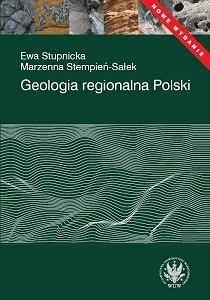
The fourth edition of the popular handbook discussing the geological units of Poland with regard to stratigraphy, sedimentology, petrography and tectonics. It presents the geological units in order from the oldest (the East European platform) to the youngest (the Carpathian Mountains, Paleogene and Neogene basins of central Poland). The valuable additions to this handbook are numerous illustrations (maps, cross-sections, and charts), two folded geological maps of Poland and a stratigraphic table. The handbook for students of universities where geology and related sciences are taught.
More...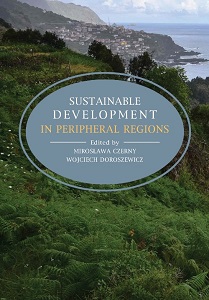
This publication is an effect of collaboration of the Institute of Regional and Global Studies of the University of Warsaw with the Pontifical Catholic University of Peru in Lima and other universities from Latin America, Asia and Europe. A collection of selected texts is devoted to sustainable development of peripheral regions in Latin America and some parts of Europe (Albania, Italy, Poland, Portugal, Spain) and Asia (Nepal). These texts discuss natural, social and cultural conditions and possibilities of development of rural regions and peripheral urban areas, with particular attention to mountainous regions, as well as possibilities of tourism development in rural areas. They fall within the current discussion carried out in the academic environment and planning on the opportunities and constraints to the development of peripheral areas.
More...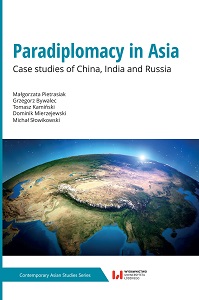
Asian regions and cities have become important international actors but the phenomenon of international engagement of regional and local governments in the Asian countries is still not sufficiently described and recognized in the scientific literature. So far, the research on paradiplomacy mostly concentrated on Europe and North America. However, as shown in this study, the regularities present in Western countries are not necessarily universal. The distinctive features of each Asia n country create quite unique contexts, in which sub-regional actors have to develop their international strategies. Same of those contexts were presented in this study in order to provide better understanding of the conditions of paradiplomacy in Asia.
More...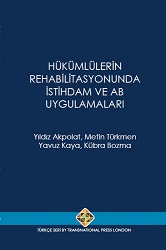
Denetimli serbestlik uygulamalarında Ülkemizin henüz 14 yıllık bir geçmişi olmasına rağmen birçok AB ülkesinin bu alanda 100 yıllık bir tecrübesi bulunmaktadır. Kendi uygulamalarımızın geliştirilebilmesi için akademisyenlerin, yöneticilerin ve uygulayıcıların, ileri uygulamaları yerinde görmesi, incelemesi ve tecrübe edebilmesi amacıyla, mesleki eğitim ve istihdam alanında ileri uygu-lamaları olan AB üyesi ülkelerden İngiltere’nin “Maze Partnership Ltd” ve Almanya’nın “Mittelhessischer Bildungsverband e.V.” kuruluşları ile stratejik ortaklığa dayalı bir proje çalışması yapılmış-tır. Proje ile hükümlülerin mesleki eğitimi ve istihdamı alanında, AB üyesi ülkelerin bilgi, tecrübe ve uygulamalarından istifade edilerek kendi koşullarımıza uygun bir “İstihdam Modeli” geliştirilmesi amaçlanmıştır.
More...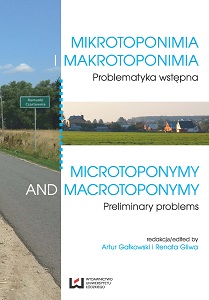
This book under the title Microtoponymy and macrotoponymy. Preliminary problems is the first volume of three-volume treatise in the series Nomina loci created and published in the onomastic center in Lodz after the 18th International and Polish Onomastic Conference, abroad and comprehensive project supported by over one hundred Polish, Slavic and non-Slavic authors. The next two books in the series will be published under the titles: Microtoponyms and macrotoponyms in communication and literature and Geographical names in physical space. The present volume starts from the chapter that introduces the general and theoretical problems of microtoponymy and macrotoponymy as the fundamental categories of geonymy in its oico- and anoiconymyc dimension and focuses on the principal theses discussed within the book. The series of publications Nomina loci is supported by the Commission of Slavic Onomastics at the International Committee of Slavists, which promotes the latest achievements in onomastic research both in Slavic area and in other regions of the world, in all basic subdisciplines of onomastics: toponomastics, anthroponomastics, chrematonomastics, literary onomastics and onomastic theory. This first book Microtoponymy and macrotoponymy. Preliminary problems deals with the theses of toponomastic studies with necessary references to other areas of onomastics, what seems crucial from the theoretical point of view.
More...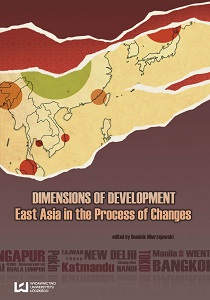
The East Asia region has drawn global attention. China, Japan, the Korean Penisula and the ASEAN countries have been developing their economies and strenghtening their participation in global economy. Contrary to this smooth process, the region posesses a number of unresolved territorial issues and suffers from a lack of security complex. The volume presents a series of papers dedicated to the East Asian countries' development. The volume is divided into three sections: dimensions of regionalism in East Asia, China's external and internal development and Japanese domestic affairs
More...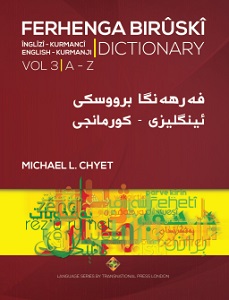
Ferhenga Biruski English-Kurmanji Dictionary Vol. 3 - A-Z . Ferhenga Biruski is the go-to dictionary for Kurmanji Kurdish spoken in parts of Iran, Iraq, Syria, Turkey while also being common among a large diaspora of Kurds in Europe, North America and elsewhere. This comprehensive Kurmanji-English dictionary is prepared in two volumes by Michael L. Chyet, a renowned linguist with extensive knowledge of the major dialects of Kurdish. This dictionary is an essential reference source for linguists and others interested in Kurdish language and people.“The second edition of my Kurmanji-English dictionary, which I would like to call “Ferhenga Birûskî” to honor the memory of my beloved friend and colleague Birûsk Tugan, contains considerably more entries, and in many cases offers fuller information on earlier entries. In addition, I have found and corrected several typographical errors. Moreover, it is to be accompanied by a companion English to Kurdish volume. […] It is my goal to accurately reflect the language as it exists today
More...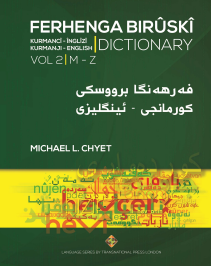
Ferhenga Biruski Dictionary Volume 2 - M-Z; Ferhenga Biruski is the go-to dictionary for Kurmanji a dialect of Kurdish spoken originally in parts of Iran, Iraq, Syria, Turkey while also being common among a large diaspora of Kurds in Europe, North America and elsewhere. This comprehensive Kurmanji-English dictionary is prepared in two volumes by Michael L. Chyet, a renowned linguist with extensive knowledge of the major dialects of Kurdish. This dictionary is an essential reference source for linguists and others interested in Kurdish language and people.“The second edition of my Kurmanji-English dictionary, which I would like to call “Ferhenga Birûskî” to honor the memory of my beloved friend and colleague Birûsk Tugan, contains considerably more entries, and in many cases offers fuller information on earlier entries. In addition, I have found and corrected several typographical errors. Moreover, it is to be accompanied by a companion English to Kurdish volume. […] It is my goal to accurately reflect the language as it exists today.”
More...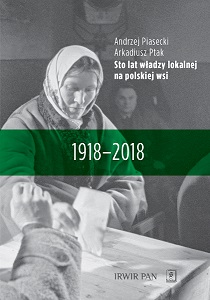
Problematyka władzy lokalnej jest z natury rzeczy bardzo szeroka i podejmowana przez przedstawicieli różnych dyscyplin naukowych. Każda z nich koncentruje się na nieco innym aspekcie funkcjonowania władzy lokalnej. W niniejszej monografii, mającej charakter przede wszystkim politologiczny, podjęto próbę odpowiedzi na dwa zasadnicze pytania badawcze:1. Jakie społeczność wiejska miała polityczne i prawne możliwości udziału w wyłanianiu władz lokalnych oraz w zarządzaniu sprawami lokalnymi?2. Jaką rolę w tym poszerzaniu (lub ograniczaniu) możliwości partycypacji odgrywały zmieniające się podziały terytorialne obszarów wiejskich? [Ze wstępu]
More...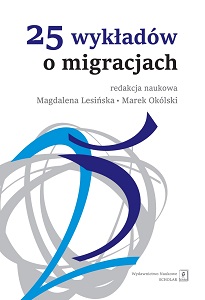
Książka jest użytecznym kompendium wiedzy o jednym z najważniejszych procesów społecznych XX i XXI wieku - współczesnych migracjach ludności.- Dlaczego historia człowieka to historia migracji? - Kim jest migrant, uchodźca, repatriant? - Jakie są przyczyny procesów migracyjnych i jakie są ich skutki dla jednostki, rodziny i społeczeństwa?- Jaka będzie przyszłość migracji?- Kim są i jak funkcjonują cudzoziemcy w Polsce? - Dlaczego migranci są populacją trudną do zbadania?Na te i wiele innych ważnych pytań odpowiadają w prezentowanej pracy specjaliści z różnych dyscyplin naukowych, m.in.: demografii, socjologii, ekonomii, nauk politycznych, prawa, historii, geografii i antropologii.Jako podstawowe kompendium wiedzy o wszelkich zjawiskach i procesach dotyczących przeszłych, teraźniejszych i przyszłych migracji niniejsza książka znajdzie czytelników wśród osób zawodowo zajmujących się tą problematyką, lecz z uwagi na przystępny język zainteresuje z pewnością także osoby spoza świata nauki.z recenzji dr hab. Marii Zielińskiej, prof. UZCechą dobrego wykładu (z którym mamy tu do czynienia) jest jego treściwość połączona ze zwięzłością. (…) Sprawiło to, że przygotowane zostało obszerne i poważne kompendium wiedzy z zakresu migracji, bardzo potrzebne na polskim rynku wydawniczym. Nie ulega też wątpliwości, że otrzymana publikacja, gromadząca rzetelną wiedzę z wielu dyscyplin, będzie jedną z ważniejszych w dostępnej literaturze przedmiotu.z recenzji prof. dr hab. Krystyny RomaniszynW tomie publikują: Marta Anacka, Katarzyna Andrejuk, Jan Brzozowski, Maciej Duszczyk, Agnieszka Fihel, Kamila Fiałkowska, Michał P. Garapich, Agata Górny, Izabela Grabowska, Marta Jaroszewicz, Aleksandra Grzymała-Kazłowska, Anna Janicka, Ewa Jaźwińska, Paweł Kaczmarczyk, Marta Kindler, Witold Klaus, Weronika Kloc-Nowak, Piotr Koryś, Magdalena Lesińska, Karolina Łukasiewicz, Wojciech Łukowski, Michał Nowosielski, Marek Okólski, Marta Pachocka, Aneta Piekut, Karolina Podgórska, Agnieszka Radziwinowiczówna, Justyna Salamońska, Karolina Sobczak-Szelc, Renata Stefańska, Dariusz Stola, Monika Szulecka, Przemysław Śleszyński, Sabina Toruńczyk-Ruiz, Paulina Trevena, Mieczysława Zdanowicz, Piotr Zdanowicz.
More...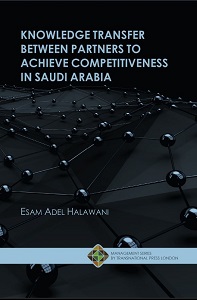
This book draws on experience and knowledge on bridging the knowledge gap between multinational corporations (MNCs) and their Saudi strategic partners in order to streamline the Logistics and Supply Chain operations. Dr Halawani explores and explains the processes by which MNCs’ affiliates achieve competitiveness from the knowledge management and organisational learning perspective. Saudi Arabia's government expedited plans for diversifying the economy. To develop the institutional capacity to achieve such an ambitious vision, it was launched and linked to the National Transformational Program (NTP). The NTP is mandated to report progress in a range of economical and societal initiatives in 2020. Contents include Chapter 1: Introduction Chapter 2: What do we know about knowledge transfers? Chapter 3: Methodology and research design Chapter 4: Analysis and findings Chapter 5: Conclusion Chapter 6: Reflections
More...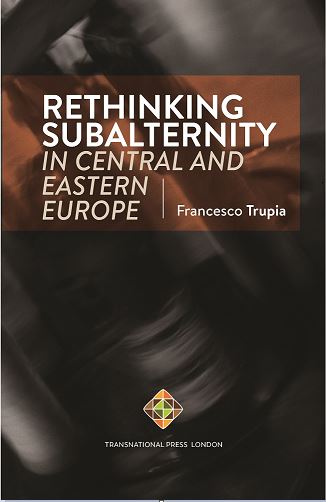
Subalternity is important. This study aims to philosophically investigate the notion of ‘subalternity’ with regard to a variety of minority issues in Central and Eastern Europe. Although a lot has been written about, too little has been achieved in practice. Therefore, this monograph gives a different perspective over the notion of “minority” in the attempt to reopen new and old places of confrontation that would potentially diversify scholarly trajectories of critical investigation.
More...